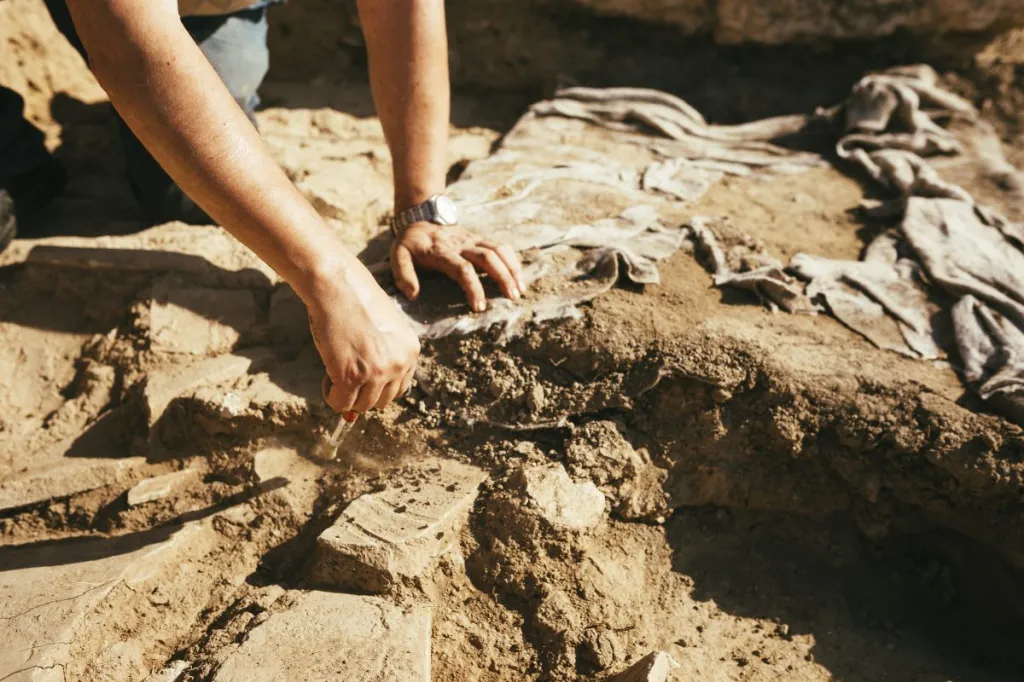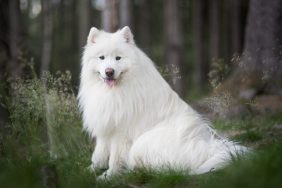Last year, archaeologists in England found remains of a lap dog from over 1,800 years ago in a villa, according to Smithsonian. The area is believed to have been inhabited between the third and fourth centuries for about 150 years during the Roman Britain era.
The fascinating discovery suggests the British kept small-sized dogs as pets centuries back. The animal whose remains were discovered was 7.8 inches tall. The canine, which was the size of a Chihuahua, is one of the shortest Roman-era dogs discovered in the United Kingdom.
DigVentures, an excavation company in the U.K., found the remains near the Wittenham Clumps in Berkshire, known as The Clumps. According to their team, the canine was believed to be female and resembled a Dachshund.
Dog may not have been bred for hunting
Archaeologists Hannah Russ and Sarah Everett said the dog’s small size and her “bowed legs” suggest she was not bred for hunting. “This, along with the fact that she might have even been buried with her owner, makes it far more likely that she was kept as a house dog, lap dog or pet.”
“In the UK, most of the small dogs we find measure between 22 – 37 cm in shoulder height, making this individual particularly small,” they added.
Additionally, there were “at least 15 small-medium sized” dogs whose remains were buried at the site. As per Russ and Everett, the other larger dogs were believed to have been used for hunting and game purposes.
When did lap dogs arrive in Britain
Adam Vaughan of The Times said lap dogs weren’t found on the island during the pre-Roman Britain era. “You find medium and large-sized working ones, probably for hunting and guarding,” he noted. During this period, these dogs were also used for herding, killed for fur, or sometimes even sacrificed.
However, post the Roman invasion, several other breeds were brought to the island. Most of them looked similar to the larger pups but were much smaller in size. Some of them had chondrodysplasia, a genetic condition causing dwarfism. They were later crossbred to produce canines with bowed legs, giving the appearance of a Dachshund.
This isn’t the first time archaeologists have found the remains of a canine alive in Roman-era Britain. Over the years, a number of excavations have revealed evidence of pups from this period.
“There were quite a lot of dogs here, and in Roman Britain in general,” the director of excavations at Silchester told Archaeology Magazine. While some evidence suggests canines were killed intentionally, others were treated quite well.
These discoveries paint a fascinating portrait of the Roman Empire. “When we think about the Romans, we’re always given stories of the military and how brutal they were,” Pina Dacier told The Telegraph. “But here’s a villa where you can see a family was living and what their family life was like.” She continued, “They’ve got their tiny dog, which they would have loved just as we all love our pets today.”
Other discoveries made during the excavation
Apart from dogs, several other animals were buried at The Clumps, according to Earth Trust, a nonprofit organization that owns the site. Archaeologists found remains of farm animals — including chickens, cows, pigs, and cattle. However, they are believed to have been “used in ritual or ceremonial activities rather than for food.”
In addition, they also found various items like combs, cleavers, strainers, cooking utensils, and jewelry. According to Maiya Pina-Dacier from DigVentures, the site offers “a snapshot of domestic life in Roman Britain.”
“It’s like peering into someone’s home,” she added. According to her, the villa was inhabited by an elite Roman family, “who ran a farm with an assortment of working animals.” These include “hunting or herding dogs – as well as this tiny canine.” Additionally, the archaeology team also discovered a cow skull. It was buried next to a decapitated dog that appeared similar to a Greyhound.
In August 2023, Earth Trust held an exhibition displaying the remains and several other artifacts discovered from the excavation. The event was part of the “Clumps Go Ancient” festival. It had more than 750 visitors who experienced the “immersive, fun-filled activities that brought history to life.” Meanwhile, the archaeologists are still working to find more information about some of the artifacts.









